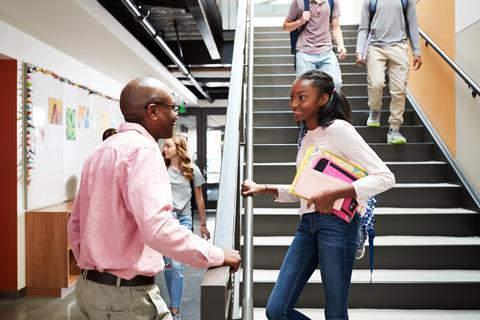Nicola Davies investigates an emerging teaching concept researchers believe is a key component for learning and student well-being

Learning should be one of the most enjoyable experiences available to us. Yet this isn’t always the case. Many students complain how tedious learning can be, and they may have a point. We know how much focus is placed on academic content and targets, which ultimately neglects the importance of student well-being.
Fortunately, an emerging train of thought sees the relationship between students and teachers as a complex bond that is about more than simply the teaching and learning process. This concept is known as ‘teacher connectedness’. The goal is to nurture the bond between teachers and students instead of focusing solely on the exchange of curriculum-related information.
The Teacher Connectedness Project is an EU-funded initiative to provide empirical evidence that teacher connectedness is a key component of a learning process that fosters student well-being. ‘People tend to think that relationships with teachers are not as important for adolescent students as in earlier ages, but some of our studies suggest that relationships with teachers continue to be a very important factor for students’ well-being in secondary education,’ says project-member Irene Garcia-Moya of the University of Hertfordshire, UK.
Findings also indicate the important role played by schools and policy-makers in integrating teacher connectedness into the school experience. ‘Of course, student–teacher relationships cannot be fully understood without considering the broader context in which they take place. School-level factors can facilitate or hinder student–teacher connectedness,’ says Irene.
The student–teacher ratio is a factor that can affect a student’s ability to connect with their teachers. The ideal scenario is that teachers can get to know, and provide individualised interactions with, each of their students. Research indicates that teacher connectedness can work even in large schools with many students, but only when there are enough teachers to provide a balanced ratio.1 Sufficient staffing and funding is needed to ensure a balance.
Putting teacher connectedness into practice
Students may not know how to engage in conversations aimed at building connections with teachers, so need a helping hand. Science teacher Jena Campbell believes there are ways to promote such conversations. ‘It is important to provide students with sentence starters for productive conversation,’ she suggests. For example, she encourages students to use sentence starters like, ‘I dis/agree with you because…’ Sentence starters are effective because they allow students to directly express their personal thoughts and feelings, which is a key component of developing a deeper connection with someone.
Teachers can also take time to learn what they can about the personalities and interests of their students. Ideally, teachers should take the first step and talk a bit about themselves before asking their students to do the same.
‘The biggest practical tip I can give would be to take the time,’ Jena says. ‘At the beginning of the year, get to know each other with ice-breaker activities and be sure to participate in them. Note birthdays, haircuts, and new shoes; ask about weekends and have conversations about every day, ordinary things as your students enter your classroom.’
Some argue that trying too hard to build a close bond between teachers and students is counterproductive. There’s concern connecting with students beyond teaching them could discourage learning. However, teachers building a relationship with students does not go against the delivery of effective teaching. Teachers who truly listen to their students and value their opinions will find the teaching process to be more effective and more rewarding. Students are not learning machines, just as teachers are people and not merely conveyors of knowledge – an emphasis on teacher connectedness recognises this.
Top tips for cultivating connectedness
- Show your students that you genuinely want them to do well in school.
- Call students by the name they prefer.
- Chat informally with students at the beginning or end of lessons or during breaks.
- Learn what your students like doing outside school. Ask about their passions and interests.
- Give attention to students who do not easily stand out from the crowd. Encourage and value their contributions in class.
- Let your students know they can always talk to you about anything, even if it’s not school related.
- When students tell you something, ensure you are actively listening. Hear what is behind the words – do their words say one thing, but their body language another? For example, a student may tell you they had a great summer but avoid eye contact or further discussion.
- When students ask for help or share a problem, try to see things from their perspective and show empathy.
The Teacher connectedness project briefing for teachers [pdf] contains further recommendations.
Nicola Davies
References
Garcia-Moya, F M Brooks and N H Spencer, J. Public Health, 2017, DOI: doi.org/10.1093/pubmed/fdx089









No comments yet